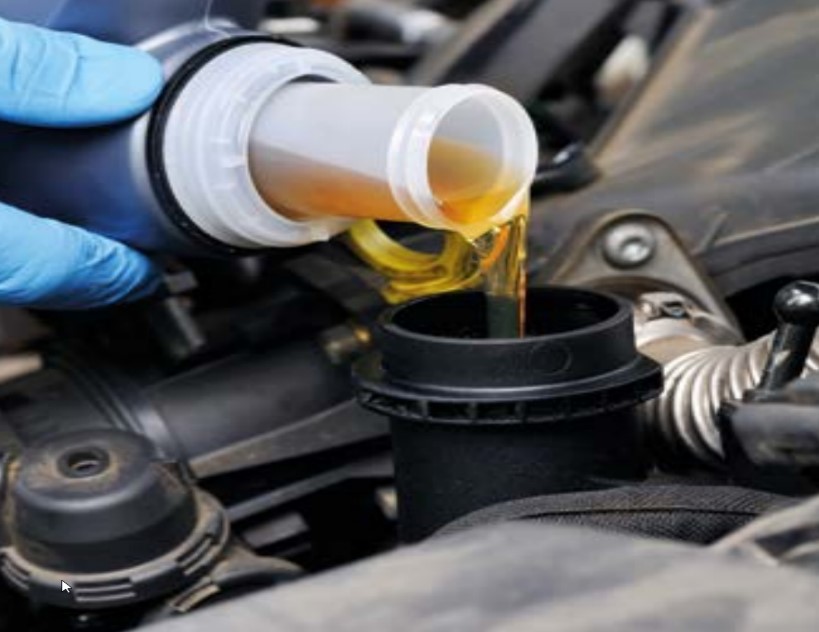The engine oil that flows in your car is responsible for important tasks such as cooling, cleaning and preventing rust and corrosion of engine parts, and the most important task of engine oil is to reduce friction caused by the contact of metal surfaces. In this section, Act Group deals with the issue of innovations Engine Oil in the automotive industry.
The engine plays an important role in your car, such as cooling, cleaning and preventing engine parts from rusting and breaking, and the most important function of engine oil is to reduce friction.
Engine Oil or car lubricant consists of two main components called base oil and additives, the choice of which defines the viscosity level of the oil such as SAE 10W40, SAE 5W40 and its API level such as SL, SM and becomes SN.
In this brief, there are some new innovations in the lubricant industry from the perspective of engine design in the automotive industry, fuel consumption reduction, engine oil change cycles, and environmental issues.

Engine oil, environment and emission reduction
Today, compared to Euro 5, the emission standard of Euro 6 has reduced particulate matter for diesel engines in commercial vehicles and buses by 67% and nitrogen oxides by 80%.
The maximum output of carbon dioxide (CO2) per kilometer for all new cars is 95 grams, and about 95 percent of car production in the world must meet these conditions.
However, it is not possible to reduce the engine’s output pollutants only by designing the engine’s mechanical aspects, and attention should also be paid to the appropriate engine oil designed for this purpose.
If the selected engine oils have a low performance level, it is not possible to reach the emission results according to the emission standards.
During combustion, an improper engine oil can produce many fine particles that accumulate in the pores of the car’s filters and significantly reduce their useful life.
Also, deposits form on the piston head or valves, which can disrupt the optimal combustion process and cause damage to the engine.
For example, oil emission regulations for the permitted levels of ingredients are reflected under the title “ash in motor oil“, and the amount of sulfated ash detected in Engine Oil is directly related to the amount of phosphorus and sulfur additives in the base oil.
This factor is defined by the abbreviation SAPS (sulfate ash, phosphorus, sulfur) and engine oils are known as low, medium or high SAPS oils.
Based on the old levels of Engine Oil production technology, large amounts of sulfur and phosphorus were added to the base oil as additives to protect against oil oxidation and wear of parts, but today, with the increase in technology, ashless motor oils are also being produced and used.
Today’s Engine Oil production technology is moving towards formulating Engine Oil with completely new additive packages and optimized base oil in order to meet new standards for producing low SAPS oil with benefits such as longer oil change intervals, less friction of engine parts and protection It is good against wear.
Engine oil, reducing fuel consumption
Today’s engines must work in a way that saves fuel and oil. An important criterion in the field of reducing oil consumption is the evaporation loss of the base oil caused by factors such as high temperatures related to the structure of the piston rings and the bottom surface of the piston.
The rate of evaporation of engine oil in contact with these parts is related to factors such as the type of base oil, its viscosity and additive package.

Due to its molecular structure, engine oil tends to thicken, which leads to the loss of its multi-purpose properties and poor performance at low temperatures.
Scratched cylinders and rims cause bad oil to stick to the engine walls, and accordingly, the engine oil burns with internal combustion, and the engine oil consumption increases, and the popular so-called engine oil decreases.
Thick oil has little friction reduction properties and increases fuel consumption. The lower the rate of oil evaporation, the more stable its viscosity properties and the lower fuel and engine oil consumption.
Engine oil, thinner and thinner, more efficient
Today’s engine oil for commercial vehicles is available in SAE 0W20 and SAE 0W30 levels, and even engine oil with SAE 0W16 and SAE 0W12 levels and for hybrid cars with SAE 0W8 level is also available in the market, and this trend is moving towards thinner and thinner oils.
Basically, any engine runs smoother and more economically with less viscous engine oil, but the thinner the oil layer, the harder it is to build a hydrodynamic and stable layer to prevent mechanical contact and wear between moving parts.
Today’s modern engines need oils whose viscosity is reduced at high temperatures, and this feature, which means the friction of the internal layers of a non-Newtonian fluid such as engine oil, is defined by the term HTTS or High-Temperature-High-Shear Viscosity.
By using oils with this feature, the viscosity is reduced at high temperature, which reduces friction in the engine. Also, fuel is used more efficiently, which means lower fuel consumption for the same engine output.
However, if the HTHS viscosity is too low and the oil film becomes too thin, the wear resistance is compromised, and therefore by setting a lower limit for the HTHS, the necessary lubrication safety in large end bearings under the influence of high shear forces and high temperature must be met. Oil is guaranteed.

In order to level the surface roughness of the paired metal surfaces and thus form an effective motor oil layer for continuous lubrication, friction reducing additives, such as organic molybdenum, are added to some oils, and this additive is often used in racing car engine oils to reduce wear be.
Defining efficient engine oils with low HTHS viscosity, high viscosity index (VI), low evaporation rate and excellent protection against wear is an ideal move, which selection is possible only with the help of a wide range of oil analyses.
Engine oil, hybrid vehicle
Hybrid cars are propelled by an electronic drive whose battery is charged when needed by a combustion engine, usually running on gasoline.
This makes the optimal efficiency of the engine at 2500 revolutions approximately 35%, which is not more than 20% in normal mode.
Nowadays, special Engine Oils are increasingly designed for hybrid engines, and since hybrid engines are usually subjected to the same pressure, oils with viscosity levels of SAE 0W8 to SAE 0W20 are used.
In these types of cars, with the help of the battery, the oil is heated before the start in such a way that the risk of wear of the parts is reduced in the first 3 seconds of the start.

Engine oil, engine development and analysis
It is very important to recognize the intervals of changes in engine oil properties, to identify the causes and prevent damage, and to analyze the lubricant in the automotive industry.
However, progress has been made in the design of Engine Oils, which are getting thinner and thinner and yet must be resistant to wear.
The development of new engines is aimed at reducing the emission of greenhouse gases and reducing the consumption of fuel and lubricants.
The use of developed engine oil and its analysis is a vital monitoring tool, especially in long-term use, to find out more about lubricants and related engines.



0 Comments